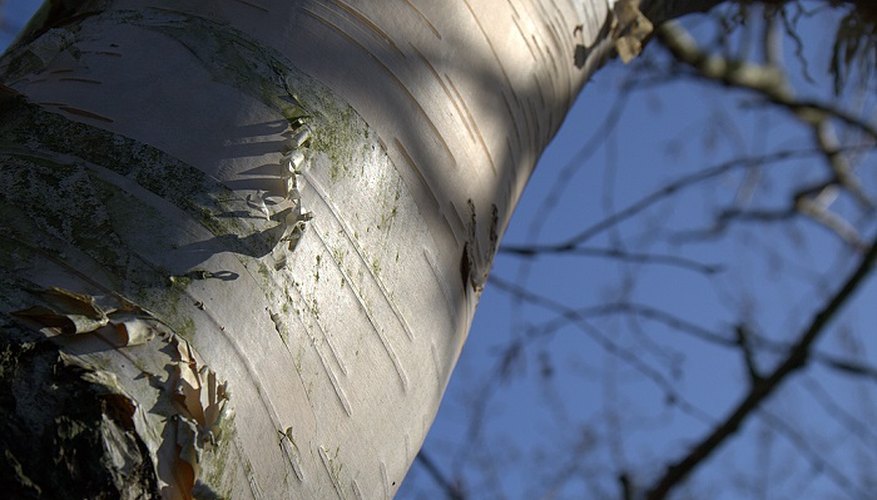Lean and graceful, birches are often considered one of the most distinctive and beautiful trees around. This is the case especially with silver birches, or European birches as they're also called. With their stunning white bark, they are a joy to look at all year long.
Unfortunately, however, they can be difficult trees to grow and require a great deal of care and maintenance to be healthy and strong. Birches need consistent water and mulching. Great care should be taken that the tree does not become susceptible to two common pests -- leafminer and bronze birch borer.
Pick a location for your birch tree. Typically birches can grow to be as tall as 15 metres (50 feet), so choose a place that is well away from power lines and the roof of your home. They also prefer an area that receives full to partial sun.
- Lean and graceful, birches are often considered one of the most distinctive and beautiful trees around.
- Typically birches can grow to be as tall as 15 metres (50 feet), so choose a place that is well away from power lines and the roof of your home.
Check the pH and quality of the soil in the location where you plan to plant the tree. Proper soil quality is one of the single most important factors in keeping your birch tree healthy. Birches prefer a pH of 5.0 to 6.5, and thrive in soils that stay moist, even through the summer months. Additionally, they do well in soils that are not compacted. You can check the soil pH using a kit from a home and garden centre. Alternatively, some garden centres may be willing to check a sample for you for free.
- Check the pH and quality of the soil in the location where you plan to plant the tree.
Loosen the soil where you plan to plant the tree. Do this for an area that is as deep as the root ball and about five times the diameter of the roots. Dig a hole at the centre of the loosened area, and place the tree in it. Cover the roots with soil and water thoroughly. If the tree is small, tie the trunk to a stake placed a few centimetres away.
Cover the area surrounding the tree with mulch. For young trees, cover an area around the tree that is about 90 cm (3 feet) in radius. For older trees, increase the radius to 1.8 metres (6 feet). Use wood chips, shredded bark or leaf compost. Apply the mulch so that it does not come in direct contact with the base of the tree, and at a depth of about 10 cm (4 inches). Don't use a plastic covering under the mulch, as this will dry out the soil and reduce the flow of oxygen. Apply fresh mulch around your tree whenever you notice that the old mulch has deteriorated.
- Cover the area surrounding the tree with mulch.
- Apply the mulch so that it does not come in direct contact with the base of the tree, and at a depth of about 10 cm (4 inches).
Water your tree often. If you are receiving adequate rainfall (about once a week), then you may be able to skip watering. However, you should water your birch whenever you're not getting this amount of a rain. Generally, if you can form the soil around the tree into a ball, then the soil is damp enough for your birch. However, if the soil crumbles to the touch, then you need to water.
- If you are receiving adequate rainfall (about once a week), then you may be able to skip watering.
- Generally, if you can form the soil around the tree into a ball, then the soil is damp enough for your birch.
Check your tree frequently for an increase in brown, dead leaves or sparse and unhealthy foliage. The former is a sign of leafminer, a common pest for birches. The latter is a sign of bronze birch borer, which can actually kill your tree. If you see either of these two signs, you can apply pesticides to take care of the problem.
TIP
You can increase the pH of the soil by adding hydrated lime, and reduce the pH by adding ground rock sulphur.
It's best to plant trees in either the autumn or winter.
Test the soil around the tree frequently. If the soil shows signs of nutrient deficiency, particularly nitrogen depletion, add a fertiliser to the soil.
WARNING
Be very careful when trimming any dead branches off your birch, as pruning too much wood off your tree could actually cause very serious damage to it. Never prune your birch in the summer.
